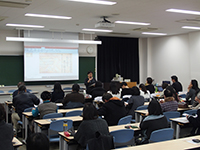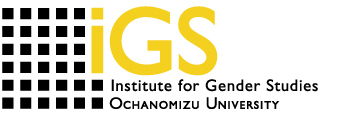IGS Symposium “Overcoming hurdles to women’s political representation: Gender quotas, public party funding and candidate recruitment strategies in Korea and Taiwan”
Democracies in East Asia, Japan, Korea, and Taiwan have a great deal in common but differences between them stand out regarding women’s political participation. Each of the three countries has an electoral system that combines districts and proportional seats, but women make up only a very small proportion: 10% in Japan’s House of Representatives; under 20% in Korea; and nearly 40% in Taiwan (as of January 2018, the exact figures are Japan 10.1%, South Korea 17%, and Taiwan 38%). It is only in Taiwan where a parity in women and men’s political representation is being reached. The adoption of a quota system for proportional representatives in the 2000s is the primary reason behind the increase in the number of women representatives. However, have quotas been a one-size-fits-all solution for encouraging women’s participation in politics? Why has the effect of a quota system differed between South Korea and Taiwan? What further attempts have been made to supplement quotas? Moreover, what changes have the quota systems brought to politics besides an increase in the number of women candidates? What can be learned from the cases of Korea and Taiwan about the changes and challenges that quotas bring, and what are the implications for the current status of women’s representation in Japan?
On January 26, 2018, the Institute for Gender Studies at Ochanomizu University invited researchers from Korea and Taiwan to hold a symposium titled “Overcoming Hurdles to Women’s Political Representation: Gender Quotas, Public Party Funding, and Candidate Recruitment Strategies in Korea and Taiwan.” The panelists at the symposium analyzed the current situation of the three countries and discussed the efforts necessary to increase women’s representation. To begin with, Prof. Ki-young Shin, who organized the symposium, introduced the current status regarding the proposed law to promote women’s political representation that was under discussion in the Diet (Japanese national legislature). The Law was expected to pass in the 2018 Diet plenary session. She posed the question, “quota systems have already been adopted in more than 100 countries around the world. However, the impact has been diverse. For example, even though Taiwan and Korea have quota systems, the proportion of female politicians is much lower in Korea (17%) than in Taiwan (38%). Why is that?”
The dynamism of the election of female politicians in Taiwan and South Korea.
In the first presentation, Prof. Wan-Ying Yang (National Chengchi University) gave a presentation on party nomination strategies and women candidacies in Taiwan. In Taiwan, the Legislative Yuan (Taiwan’s National Legislature) was reformed in 2005, and the electoral system shifted from a system of multi-member districts (SNTV) to one of single-member districts and proportional representation. At the same time, the quota system was transferred from the electoral districts to the proportional representation. Initially, women’s groups opposed this reform on the grounds that “single-member districts made it harder for women candidates to be elected.” However, this was not necessarily the case. Comparing the nomination of women candidates between two political parties for eight elections to the Yuan between 1992 and 2016, the rate of nominated women candidates was higher for the Kuomintang (KMT) than for the Democratic Progressive Party (DPP) except for two elections. If the two parties’ nomination methods are compared, the KMT uses a system of centralized approval by party headquarters, while the DPP adopts a more “democratic” approval method involving primary elections and others. After the reform of the electoral system, both parties saw an increase in cases where party headquarters conducted nominations, and the number of nominated female candidates increased.
In short, Yang’s analysis revealed an interesting result that “when party headquarters drew up candidate lists that took into account gender balance, the number of female politicians increased, but party’s internal democracy was not necessarily beneficial for women.”
The presentation by Dr. Soo-Hyun Kwon (Gyeongsang National University) focused on “women’s political development funds” in public party funding. In Korea, the system for boosting women’s political advancement consists of three planks: a quota system, women candidate endorsement subsidies, and women’s political development funds. Women candidate endorsement subsidies are paid to political parties that endorse women as candidates in electoral districts. In addition, parties must give over 10% of the party’s grants to women’s political development funds.
Dr. Kwon’s analysis of each party’s use of women’s political development funds indicated the following: (1) the proportion of the funds’ expenditures on personnel costs was too high; (2) over time, expenditure on cultivating female politicians was reduced. Parties did not introduce any systematic training program for women candidates; and (3) the status of the divisions responsible for women’s policy were low and they were unable to produce women’s policy with any distinctive characteristics. Arguing that even with the system in place, insufficient recognition within political parties formed an obstacle to women’s advancement. She emphasized the importance of women’s empowerment at an internal party level.
Dr. Jinock Lee (Sogang University) presented on the male dominance of Korean politics from the perspective of feminist institutional analysis. Lee pointed out that when analyzing representation, an excessive focus on women who are underrepresented may impose the responsibility on women themselves for women’s low level of political representation. Rather, it is necessary to focus on men’s over-representation. In Korea, although half of the slots on the proportional lists are assigned to women, proportional representatives make up only 15.7% of the seats in the National Assembly, and this percentage has even decreased in the last electoral reforms. Moreover, there is persistent criticism from feminist groups that the quota system only benefits women from an elite background. However, the quota system also helped many women who came from young citizens’ groups to enter the legislature who are active in the fields of welfare and labor policy. On the basis of this, Lee concluded that the combination of proportional representation and quotas “a good system,” and that it is necessary to expand it further.
Comparisons with Japan, the significance of adopting a quota system, and other factors.
In the second half of the symposium, the three presenters conducted a round table discussion with three discussants.
The first discussant, Prof. Reiko Oyama (Komazawa University), stated that while there are more female lawmakers in local politics than in national politics in other countries, in Japan, the number of female lawmakers is only approximately equal to that in national politics, with the exception of urban areas. Noting that it would be difficult to revise the constitution and to introduce a quota system in Japan, she preferred the Korean method of using party funding as an incentive for the parties to increase women candidates.
Prof. Gregory Noble (the University of Tokyo) emphasized that the electoral system could not fully explain women’s representation. Because the role of political parties and the characteristics of electoral districts are important factors, a detailed analysis of each separate country would be necessary to explain the different level of women’s political representation.
Finally, Prof. Mari Miura (Sophia University), argued that the cases of Taiwan and Korea reveal that proportional representation system is indeed a highly significant factor in electing more women. She predicted that in Japan, where 38% of seats are elected via this system, introducing a quota system to the proportional representation tier would bring about great changes. However, Miura pointed out that, at present, because of deep distrust toward political parties, weak citizens’ movements, as well as the fact that the power to nominate candidates lies with central leadership, it is also important to increase the number of women candidates in electoral districts.
In response, Prof. Yang used the example of Taiwan to argue that quotas for proportional seats are not necessarily a decisive factor, emphasizing that there was a process of the two parties learning from each other in Taiwan, and that choosing a better balance of candidates was the responsibility of political parties. Dr. Kwon said that in Korea, there were 25 women assembly members elected via party lists and 26 members elected in electoral districts. She argued that, in addition to quotas and electoral systems, political parties and urbanization are also important factors in explaining the level of women’s political participation. Dr. Lee said that a politics that only represents the interests of men brings distrust in politics and indicated that an attitude of “freedom in responsibility for politics’ would possibly work in women’s favor.”
In the subsequent discussion regarding the nomination of candidates in proportional representation, it was remarked that “most of the people who screen the candidates are men, so it is necessary to review the panel members such that there is a fifty-fifty balance of men and women” (Dr. Kwon), and “it is important to systematize the nomination process, such as in Germany’s points system” (Dr. Lee). Prof. Miura said that “in South Korea and Taiwan, citizens are monitoring politicians and evaluating their political activities. If citizens’ activities could use about 1% of the grants to parties, monitoring would be possible in Japan too.” Finally, Prof. Shin concluded by saying that “the victims of a politics lacking diversity are hard to see, but if political power is concentrated in a particular social group, the country as a whole can suffer. The problem is that we possess a very low sense of ownership toward politics, and it is important for everyone to have awareness of themselves as stakeholders.”
Women’s political participation in Japan is far behind that of other countries, but depending on how we think about it, there are many precedents and experiences that can be referred to. Although quota systems are often viewed as trump cards for increasing the number of female politicians, this symposium revealed an understanding of the necessity to have a comprehensive debate that considers political parties’ thinking, inter-party dynamics, the various related institutions, and the power of civil society.









